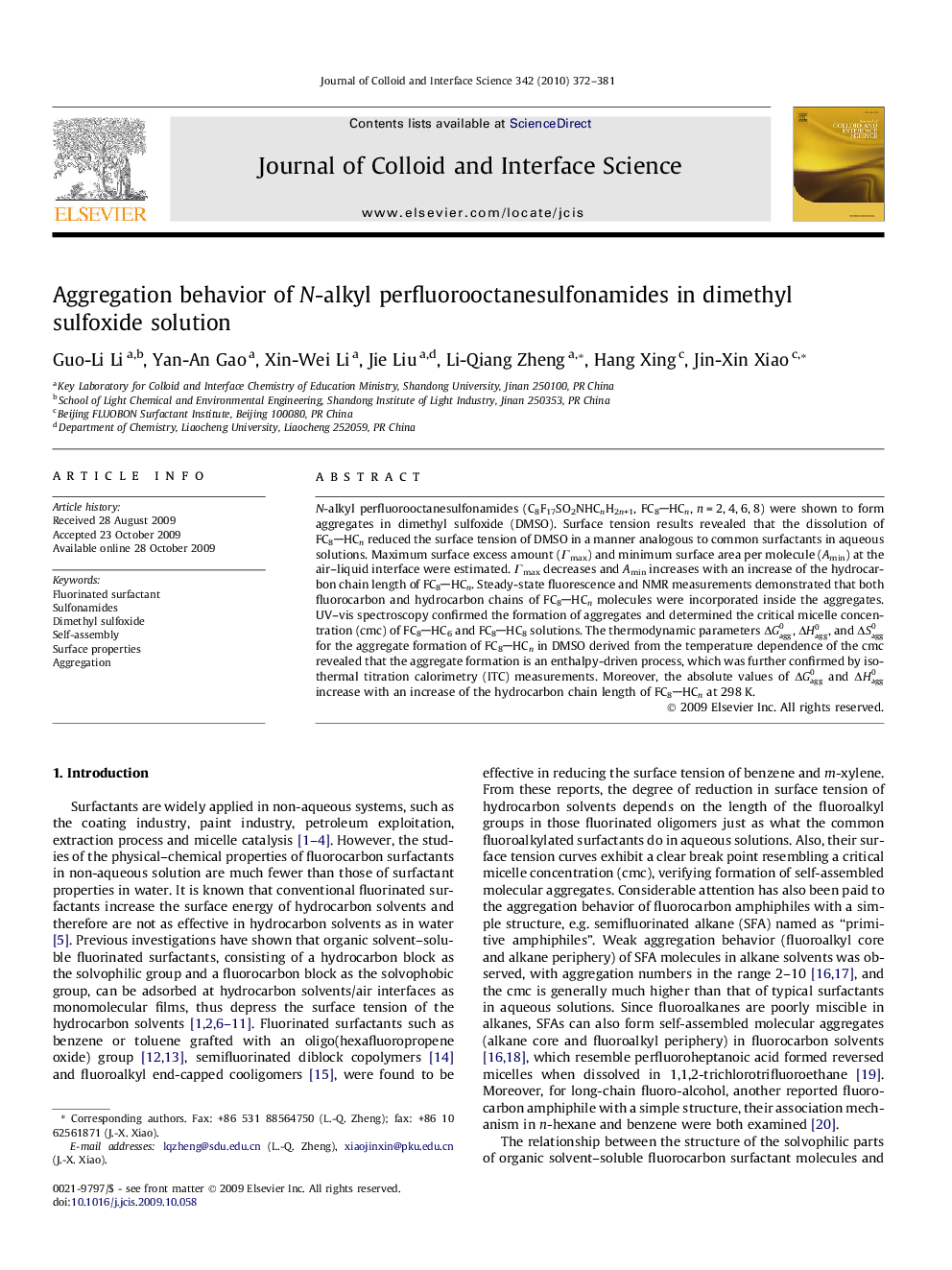| Article ID | Journal | Published Year | Pages | File Type |
|---|---|---|---|---|
| 609533 | Journal of Colloid and Interface Science | 2010 | 10 Pages |
N-alkyl perfluorooctanesulfonamides (C8F17SO2NHCnH2n+1, FC8HCn, n = 2, 4, 6, 8) were shown to form aggregates in dimethyl sulfoxide (DMSO). Surface tension results revealed that the dissolution of FC8HCn reduced the surface tension of DMSO in a manner analogous to common surfactants in aqueous solutions. Maximum surface excess amount (Γmax) and minimum surface area per molecule (Amin) at the air–liquid interface were estimated. Γmax decreases and Amin increases with an increase of the hydrocarbon chain length of FC8HCn. Steady-state fluorescence and NMR measurements demonstrated that both fluorocarbon and hydrocarbon chains of FC8HCn molecules were incorporated inside the aggregates. UV–vis spectroscopy confirmed the formation of aggregates and determined the critical micelle concentration (cmc) of FC8HC6 and FC8HC8 solutions. The thermodynamic parameters ΔGagg0, ΔHagg0, and ΔSagg0 for the aggregate formation of FC8HCn in DMSO derived from the temperature dependence of the cmc revealed that the aggregate formation is an enthalpy-driven process, which was further confirmed by isothermal titration calorimetry (ITC) measurements. Moreover, the absolute values of ΔGagg0 and ΔHagg0 increase with an increase of the hydrocarbon chain length of FC8HCn at 298 K.
Graphical abstractAggregation behavior of N-alkyl perfluorooctanesulfonamides (FC8HCn, n = 2, 4, 6, 8) in dimethyl sulfoxide solutions were studied by surface tension measurements, FF-TEM, steady-state fluorescence, NMR and UV–vis spectroscopy.Figure optionsDownload full-size imageDownload high-quality image (83 K)Download as PowerPoint slide
